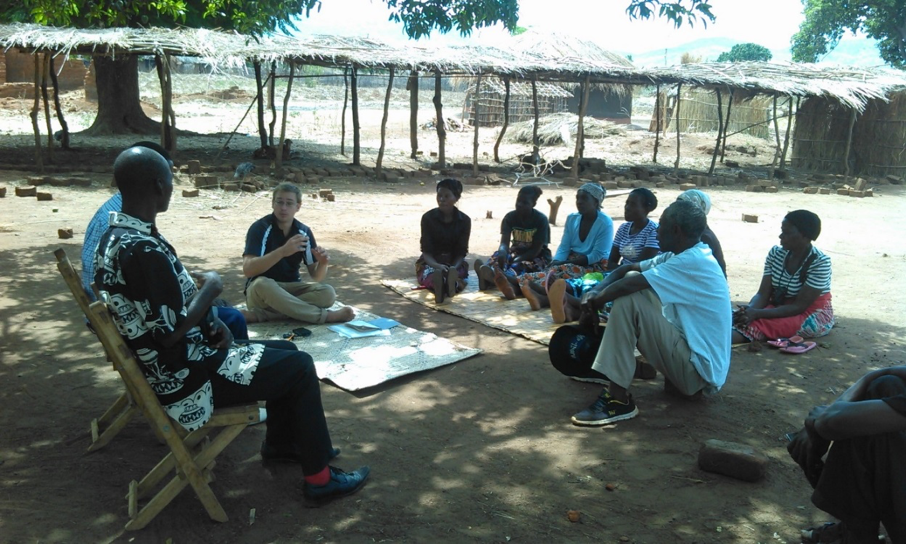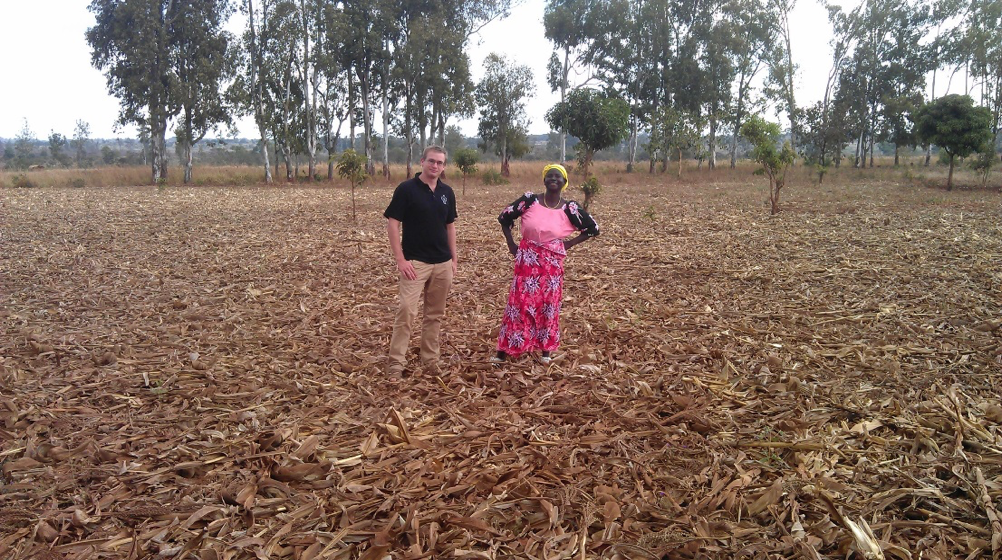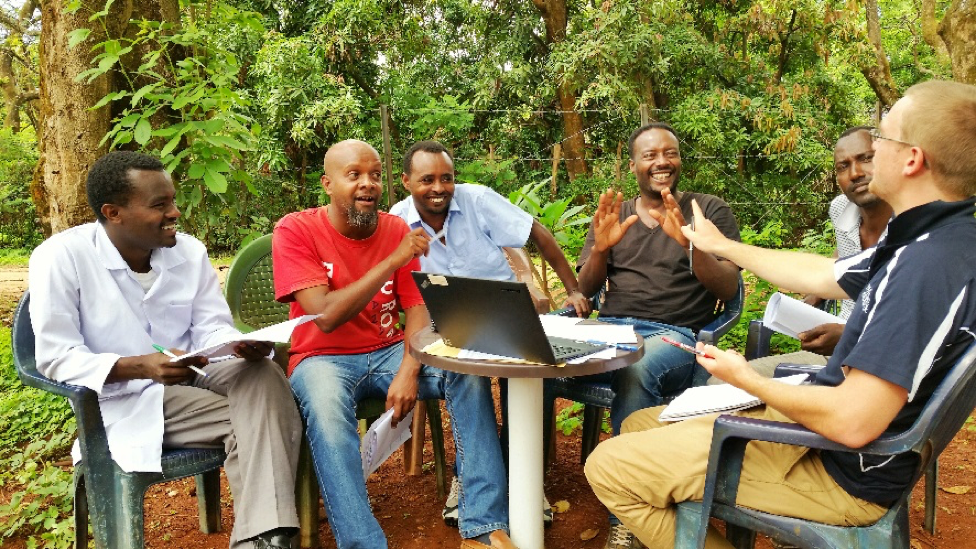Are we causing more harm than good?
Reflections and ethical dilemmas from 8 years in African agricultural development.
Helping – that’s why we do what we do. It’s the name of the game in R4D. Especially as researchers, we promise to cause no harm to those we interact with and set out with best intentions, but are we unintentionally causing harm in the communities we work in?
As a background, since undertaking undergrad work experience in western Tanzania in 2009, I’ve floated around in agricultural R4D, working as a graduate officer at ACIAR and on an AYAD with the FAO in Ghana. I’m now finishing up my PhD which aims to better understand the adoption of improved agricultural technologies and pathways for socially inclusive development across eastern and southern Africa.
My PhD is basically collecting farmer stories about their livelihoods, their constraints and how they make their farming decisions. One of the themes that came up again and again in more than 325 interviews was that of inclusiveness in development, and the unintended consequences of our methods in research and extension. It really made me question what we are doing and, specifically, are we are helping or hurting?

Photo: Brendan discussing agricultural decision making with a focus group near Chipata, Zambia
There is one particular interview that has stuck with me. I was talking with Teresa* (*name changed to protect privacy), an older lady who lives and farms near Embu, Kenya. She mused:
“The problem is you people come to just a few people. If you just help only a few, then you build up inequality in the same community and you increase theft and these things and it really hurts the community. You should really not do this… We want all to benefit and the community to grow, not just a few.”
There are many things to unpack here! But the first is the way this is worded. It is a ‘you vs us’ statement. It isn’t the words of a team working in unison, but a relationship in breakdown. Most of the time, respondents don’t want to openly speak their minds due to fear of reprisals. But Teresa had no fear and put it in no uncertain terms – you are causing us harm.
The harm she is referring to is the impact of extension activities in her community, and specifically the dominant method used by development organisations to get information to farmers – the lead farmer approach (also known variously as model farmer, farmer to farmer, farmer expert, farmer trainer, etc.). The theory of such an approach is that local networks can be leveraged to quickly diffuse information into a community, using local social, trust and information networks.
It has been widely adopted in sub-Saharan Africa because of the difficulty governments and organisations face in providing information to huge, diverse and widely spread populations. Noting resource constraints (particularly a lack of agricultural extension officers who often have responsibilities for many thousands of households) it provides a cost effective entry point into local communities.
However, my research tends to find that in practice things end up differently. The general perception is as follows: one farmer in a community is picked (often amongst accusations of bias) and endowed with resources (that few other households have the ability to afford) and some training (at exclusive training events). Then they are told (with little oversight or ongoing interaction with organisations) to go and teach the rest of their community about the practice.
And the general outcome? Lead farmers tended to have limited effectiveness in their community, and generally they were seen as individually benefiting from projects without returning much at all to their communities. Lead farmers were essentially seen as growing their livelihoods through being favoured by ‘outsiders’ whilst the rest of the community struggle. And with that grows distrust, disunity and growing inequality.

Photo: Brendan standing with a Conservation Agriculture lead farmer near Mitundu, Malawi. But does the lead farmer approach raise one farmer at the expense of others?
Whilst the lead farmer approach may be viewed as effective from an institutional perspective, the vast majority of farmers I interacted with displeased with its functionality. From top to bottom, farmers were struggling to obtain reliable information to improve their livelihoods. But of most concern was the underlying assertion that our activities were creating a two tiered society – the elite ‘haves’ who have access to development activities and are growing their livelihoods; and the shunned ‘have nots’ who don’t have access and struggle to improve their livelihoods. Such extension activities have the potential to favour the elites and exclude the masses through the exclusivity of learning activities and resource provision. The elites are attracted by status and access to resources and markets whilst the masses turn away from not just current practices but future initiatives as well.
At the heart of this is the need to find more open, inclusive and equitable ways to provide information to communities. Every intervention will build inequality between benefiting adopters and non-adopters, but what is important is that each household has similar information to inform their decision to adopt or not. Without this, interventions risk creating a tiered communities.
There are no easy answers for resource constrained extension systems. Some argue for farmer field days and these are great for creating awareness, but follow up training is required to create understanding. Likewise, many see ICT as a pathway towards filling the information void. But farmers like to see and experience new practices with their own eyes, particularly African smallholder farmers. So these won’t replace the need for tangible, on the ground community activities.
Whatever the solution is, it’s going to need to muster many different methodologies and a focus not just on technological benefits but how to make practices feasible and relevant to the end users – smallholder farmers. Underpinning approaches needs to be the principles of openness, inclusiveness and equality of opportunity. Innovation platforms provide one pathway, but they need to be further tailored to ensure they are not ‘top heavy’ but truly participatory for the ‘average’ farmer.
I should soon have some publications out that explore different farmer perspectives on current extension systems. But in the mean time I want to pose a few questions to the RAID community. As the next generation that will be contributing to and leading future R4D initiatives:
– Do we truly understand the ‘average’ farmer, or just our ‘project’ farmer?
– Does some farmer’s development come at the (unfair) expense of others?
– Despite best intentions, are we inadvertently causing harm with our activities?
– Are we doing enough to question our methods, the status quo, the modus operandi?
Come one, come all to the discussion section below….

Photo: A friendly focus group discussion at Baco agricultural research station, Ethiopia


